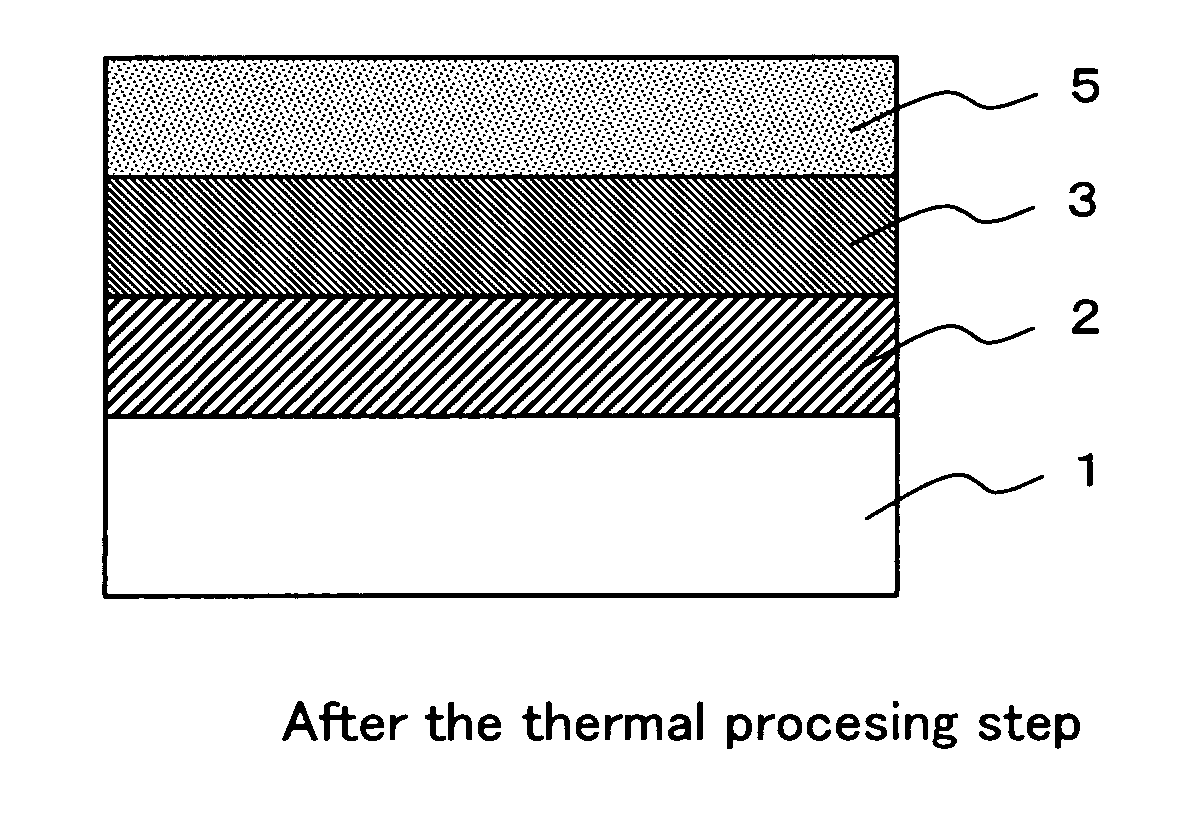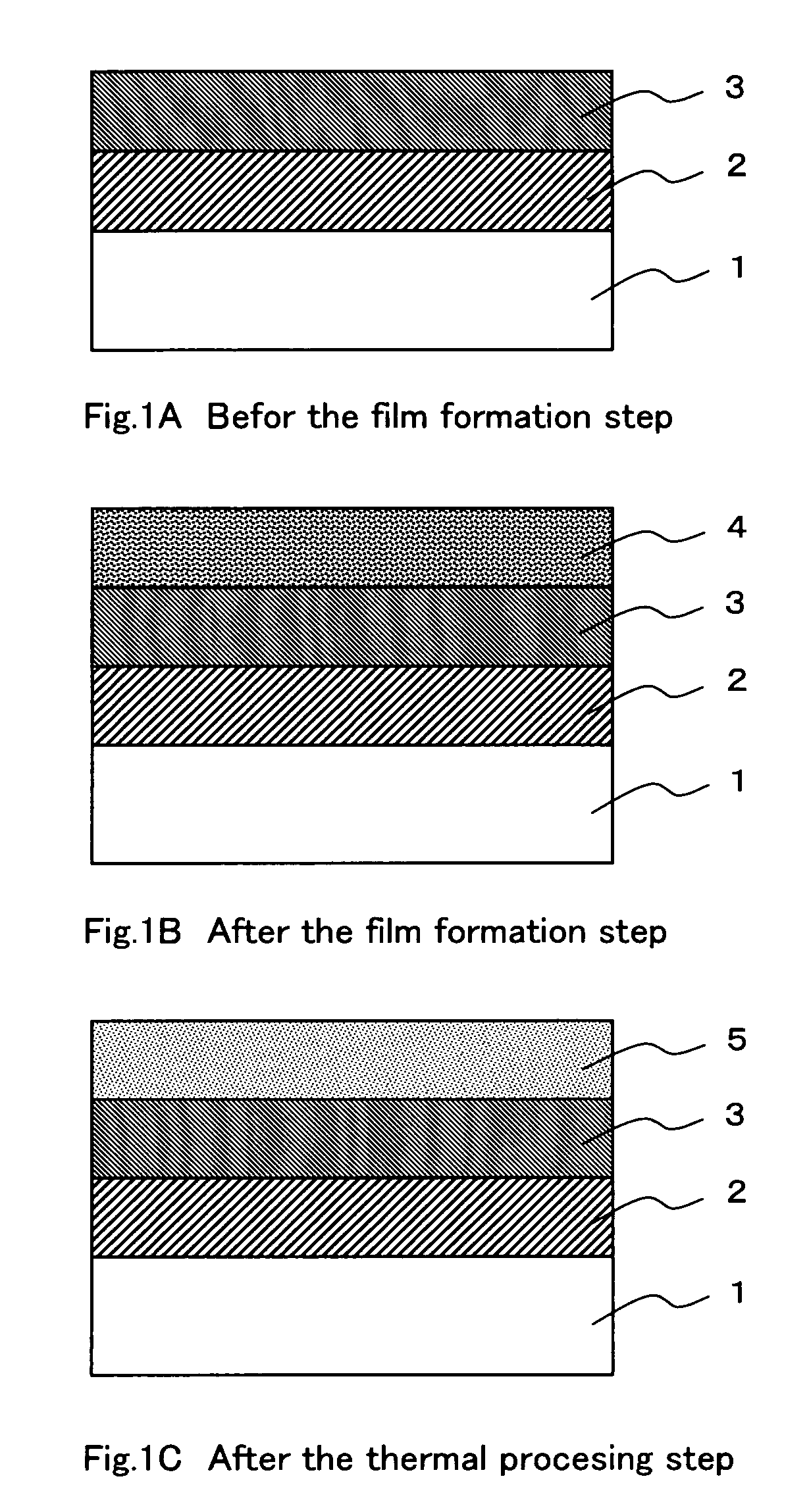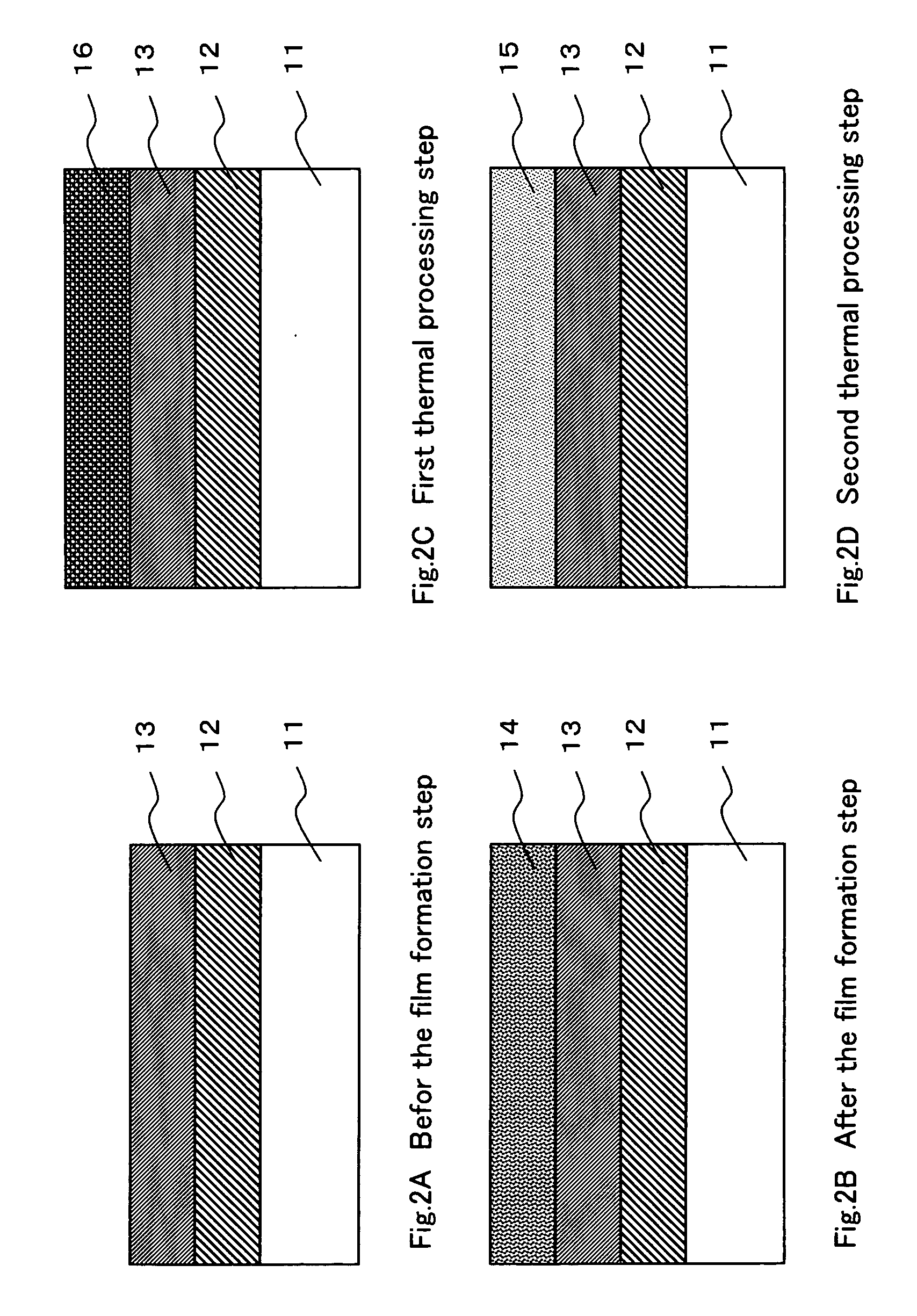Semiconductor device and manufacturing method for same
a semiconductor and manufacturing method technology, applied in semiconductor devices, digital storage, instruments, etc., can solve the problems of inability to perform non-destructive read-out, unstable crystals, and difficulty in processing materials, etc., to achieve easy implementation of non-volatile memory, increase resistivity value, and low power consumption
- Summary
- Abstract
- Description
- Claims
- Application Information
AI Technical Summary
Benefits of technology
Problems solved by technology
Method used
Image
Examples
first embodiment
[0030] As shown in FIG. 1, first, an insulating film 2 and a high melt point metal film 3 are formed on the surface of a semiconductor substrate 1 according to a known technology. An Si substrate 1 having a thickness of 750 μm and a diameter of approximately 200 mm (8 inches), for example, is prepared as the semiconductor substrate 1, and 1 μm of a silicon oxide film 2 (insulating film 2) and 300 nm of a Pt film 3 (high melt point metal film 3) are deposited using a commercially available CVD unit (FIG. 1A).
[0031] Subsequently, in the film formation step, 200 nm of a Pr0.7Ca0.3MnO3 film 4 (PCMO film 4) is deposited at a film formation temperature of 300° C. according to a PVD method (FIG. 1B). Here, it is desirable for the film thickness of PCMO film 4 to be in a range from 100 nm to 600 nm. The PCMO film that has been formed at 300° C. is in crystal form in an amorphous state where coupling between the respective component atoms that form the perovskite structure is incomplete, an...
second embodiment
[0038] Next, a second embodiment of the method of the present invention is described in reference to FIG. 2.
[0039] First, an insulating film 12 having a film thickness of 1 μm and a high melt point metal film 13 having a film thickness of 300 nm are sequentially deposited on a semiconductor substrate 11 (FIG. 2A). For example, a CVD-Si oxide film is used as the insulating film 12, and Pt is used as the high melt point metal film 13, respectively. The above described process is carried out in the same manner as in the first embodiment.
[0040] Subsequently, in the film formation step, 200 nm of a Pr0.7Ca0.3MnO3 film 14 (PCMO film 14) is deposited at a film formation temperature of 300° C. according to a PVD method (FIG. 2B). Here, it is desirable for the film thickness of the PCMO film 14 to be in a range from 100 nm to 600 nm, in the same manner as in the first embodiment.
[0041] Next, in the first thermal processing step, an annealing process is carried out on the semiconductor sub...
third embodiment
[0046] Next, the third embodiment of the method of the present invention is described in reference to FIG. 3.
[0047] First, an insulating film 22 having a film thickness of 1 μm and a high melt point metal film 23 having a film thickness of 300 nm are sequentially deposited on a semiconductor substrate 21 (FIG. 3A). For example, a CVD-Si oxide film is utilized as the insulating film 22, and Pt is utilized as the high melt point metal film 23, respectively.
[0048] Subsequently, in the film formation step, 200 nm of a Pr0.7Ca0.3MnO3 film 24 (PCMO film 24) is deposited at a film formation temperature of 300° C. according to a PVD method (FIG. 3B). Here, it is desirable for the film thickness of the PCMO film 24 to be a film thickness in a range from 100 nm to 600 nm, in the same manner as in the first and second embodiments.
[0049] Next, in the surface processing step, the semiconductor substrate 21 on which the PCMO film 24 has been deposited is exposed to a plasma atmosphere using a ...
PUM
 Login to View More
Login to View More Abstract
Description
Claims
Application Information
 Login to View More
Login to View More - R&D
- Intellectual Property
- Life Sciences
- Materials
- Tech Scout
- Unparalleled Data Quality
- Higher Quality Content
- 60% Fewer Hallucinations
Browse by: Latest US Patents, China's latest patents, Technical Efficacy Thesaurus, Application Domain, Technology Topic, Popular Technical Reports.
© 2025 PatSnap. All rights reserved.Legal|Privacy policy|Modern Slavery Act Transparency Statement|Sitemap|About US| Contact US: help@patsnap.com



